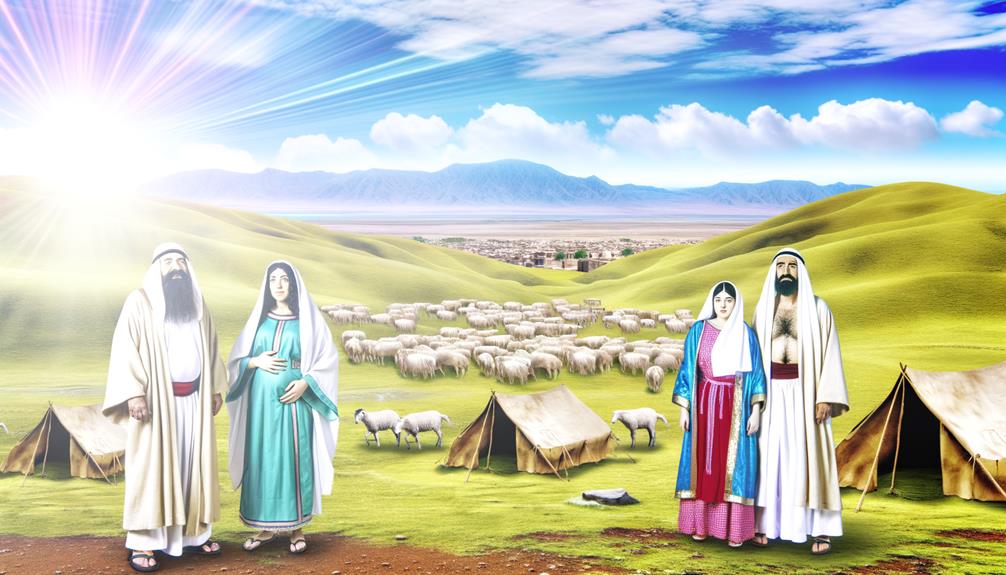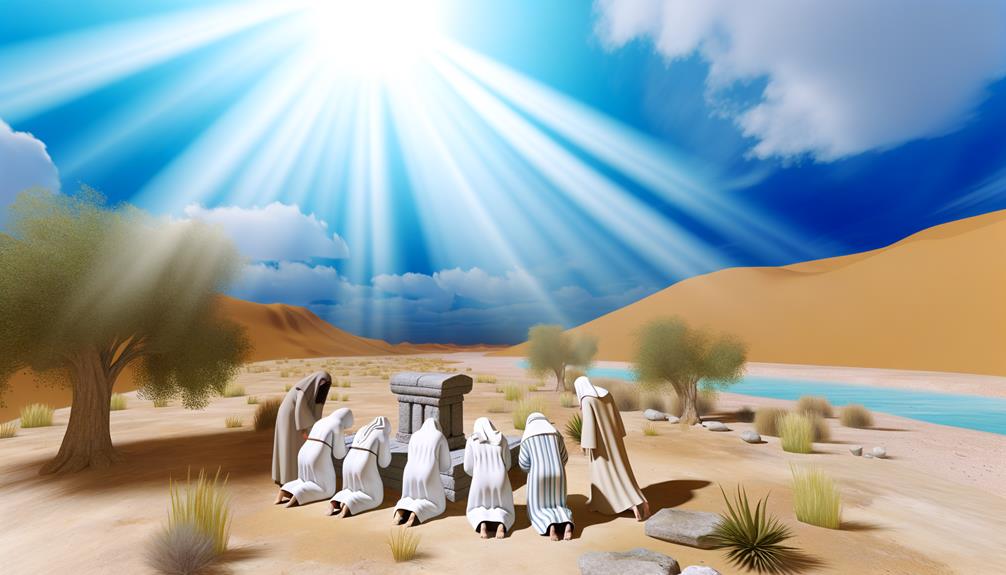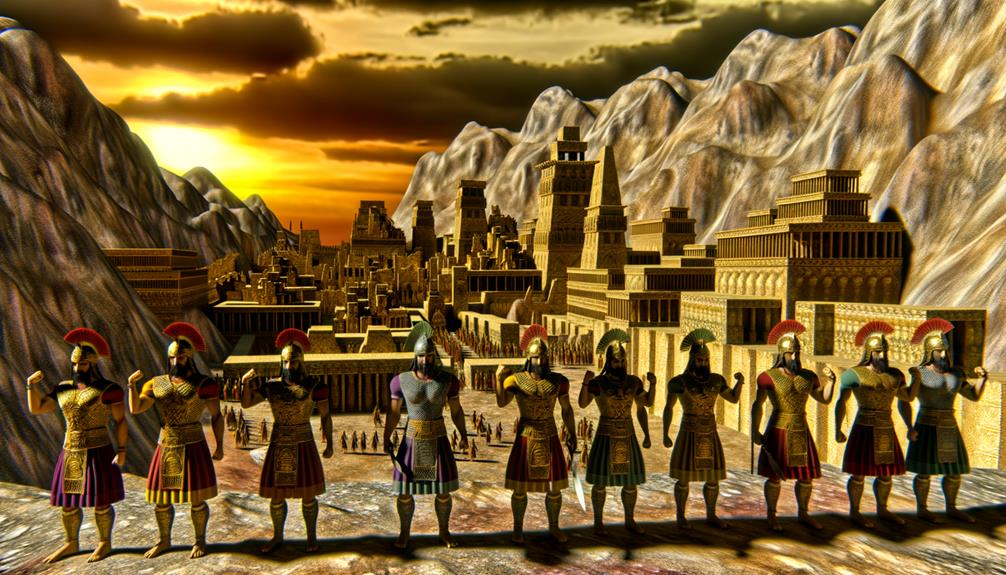Ites Meaning In The Bible: Canaanite Tribes Explained
In biblical literature, the suffix ‘ites’ identifies descendants or inhabitants of particular tribes or regions, derived from ancient Hebrew. Examples include Israelites, Canaanites, and Amalekites.
This suffix is significant for understanding the socio-cultural and genealogical contexts of biblical narratives. It highlights the collective identity and territorial affiliations of various groups, distinguishing God’s covenant people from other populations.
The suffix is integral to interpreting the complex socio-political dynamics, alliances, and conflicts within the biblical framework. Further exploration of this term reveals deeper insights into ancient Near Eastern cultures and theological themes.

Ites Meaning in the Bible: Who They Were and What They Represent
| Aspect | Details |
|---|---|
| Term | “Ites” (a suffix used in tribal names) |
| Meaning | Denotes lineage or people group (e.g., Hittites = sons of Heth) |
| Origin | Found in Old Testament Hebrew texts |
| Common Tribes | Hittites, Amorites, Perizzites, Jebusites, Canaanites, Hivites |
| Biblical Context | Inhabitants of the Promised Land before Israel’s arrival |
| Scriptural References | Genesis 15:20, Exodus 3:8, Deuteronomy 7:1 |
| Symbolism | Represents worldly influences, opposition, and spiritual conflict |
The Etymology of ‘Ites’

In the context of biblical literature, the suffix ‘ites’ originates from ancient Hebrew and serves to denote descendants or inhabitants of a particular tribe or geographic region.
This etymological structure is evident in the names of numerous groups mentioned throughout the Old Scriptures, such as the Israelites, Canaanites, and Amalekites.
The suffix itself, transliterated from the Hebrew ‘-i’ (י), signifies a collective identity tied to a progenitor or locale.
This linguistic convention is not unique to Hebrew but also appears in other Semitic languages, highlighting a broader cultural practice of defining social groups through lineage or territorial association.
Understanding this suffix’s etymology provides insight into the socio-cultural frameworks that shaped ancient Near Eastern identities.
Significance in Biblical Texts

The suffix ‘ites’ in biblical texts serves as an essential marker for understanding the genealogical and territorial affiliations that define various groups within the narrative framework of the Scriptures.
This suffix often identifies distinct tribes, clans, or nations, such as the Canaanites, Amorites, and Hittites, thereby providing critical context for the sociopolitical and religious dynamics depicted in the Bible.
These designations allow readers to grasp the complex interplay of alliances, conflicts, and cultural exchanges that shaped the ancient Near Eastern world.
Additionally, the ‘ites’ suffix helps distinguish between God’s covenant people and other populations, offering insights into divine promises, judgments, and the unfolding of salvation history.
This contextual understanding is indispensable for a thorough exegesis of biblical texts.
Israelites: God’s Chosen People

Among the numerous groups identified by the ‘ites’ suffix, the Israelites stand out as God’s chosen people, central to the unfolding narrative of divine promises and covenantal relationships.
Biblically, the Israelites are descendants of Jacob, also known as Israel. Their significance is heightened through covenants made with patriarchs Abraham, Isaac, and Jacob, which established them as recipients of God’s promises.
This relationship is further solidified through the Exodus narrative, where God’s deliverance from Egyptian bondage underscored their unique status.
The Israelites’ journey to the Promised Land and the giving of the Law at Sinai represent pivotal moments that shape their identity.
Consequently, the Israelites are a focal point in the theological and historical framework of the Bible.
Canaanites: Inhabitants of Canaan

The Canaanites, as the indigenous inhabitants of Canaan, have origins rooted in the descendants of Ham, according to biblical genealogies.
Their cultural practices, which included polytheistic worship and specific agricultural customs, often brought them into conflict with the monotheistic Israelites.
Understanding the Canaanites’ ancestry and cultural framework is essential for comprehending their role and portrayal within biblical narratives.
Origins and Ancestry
Emerging from the ancient Near Eastern milieu, the Canaanites are traditionally recognized as the indigenous inhabitants of the land of Canaan, a region that holds significant historical and theological importance in biblical narratives.
Their origins and ancestry are enveloped in the intricate tapestries of ancient civilizations, contributing to the cultural mosaic of the Near East. Biblical texts often reference the Canaanites, delineating their genealogical ties and territorial claims.
Here are some key aspects of their identity:
| Aspect | Description | Significance |
|---|---|---|
| Geographic Origin | Canaan, spanning modern-day Israel, Palestine, Lebanon | Central to biblical history |
| Ancestry | Descendants of Ham, son of Noah | Links to broader biblical genealogies |
| Historical Mention | Frequent references in Old Scriptures | Indicates cultural and historical impact |
| Theological Role | Often portrayed as adversaries of Israelites | Highlights narrative conflicts |
Understanding their origins is vital for contextual biblical interpretation.
Cultural Practices
A myriad of cultural practices among the Canaanites provides a nuanced understanding of their societal structure and religious beliefs.
Central to Canaanite culture was their polytheistic religion, which featured a pantheon of deities such as Baal, Asherah, and El. Rituals often included animal sacrifices and offerings to gain favor from these gods.
Socially, city-states governed by local kings demonstrated a decentralized political system. The Canaanites’ artisanal skills in pottery, metallurgy, and textiles reflect their advanced craftsmanship.
Evidence from archaeological excavations, including the Ugaritic texts, further underscores the significance of literacy and record-keeping in their society.
Collectively, these elements illustrate the complexity and richness of Canaanite culture, contributing to a broader understanding of ancient Near Eastern civilizations.
Amalekites: Perpetual Enemies

The Amalekites, descendants of Esau, are often portrayed as enduring adversaries of the Israelites, marked by their historical and theological significance.
This animosity is exemplified in key biblical conflicts, such as the Battle of Rephidim and the narrative of Saul’s incomplete victory.
Symbolically, the Amalekites continue to represent perpetual opposition to divine principles, underscoring their lasting impact in biblical literature and thought.
Origin and Animosity
Rooted deep within biblical history, the Amalekites are often depicted as perpetual antagonists of the Israelites, their origin tracing back to Esau’s grandson, Amalek.
The genealogical link to Esau is vital, as it embeds the Amalekites within the broader narrative of familial conflict and divine favor.
Esau, known for his contentious relationship with his brother Jacob (Israel), symbolizes estrangement and rivalry.
This enmity is perpetuated through Amalek and his descendants, who repeatedly emerge as adversaries.
Their hostilities are not merely incidental but are portrayed as divinely ordained, emphasizing a theological dimension to the animosity.
This perpetual conflict underscores the Amalekites’ role as a foil to the Israelites, serving as a recurring embodiment of external threat and moral opposition.
Key Biblical Conflicts
Throughout the biblical narrative, the Amalekites’ hostilities with the Israelites manifest in several key conflicts, each reinforcing their role as perpetual antagonists.
Significantly, the first encounter in Exodus 17:8-16 depicts the Amalekites’ unprovoked attack at Rephidim, resulting in Moses’ strategic leadership with Joshua’s military prowess.
Subsequently, in 1 Samuel 15, Saul’s partial obedience in executing the divine command to annihilate the Amalekites highlights the theological tension and the enduring enmity.
The recurring strife culminates in 1 Samuel 30, where David’s pursuit and defeat of the Amalekites at Ziklag underscores their persistent threat.
These conflicts not only underscore the Amalekites’ antagonistic role but also emphasize broader themes of divine justice and covenantal faithfulness within the Israelites’ historical narrative.
Symbolic Significance Today
In contemporary theological discourse, the Amalekites are frequently invoked as emblematic of enduring spiritual adversaries, symbolizing opposition to divine purpose and moral order. This symbolic representation extends beyond mere historical context, capturing the essence of perpetual struggle against forces perceived as chaotic or morally corrupt.
- Spiritual Warfare: The Amalekites are often referenced in discussions on spiritual battles, illustrating the continuous conflict between good and evil.
- Moral Vigilance: They serve as a reminder of the necessity for constant ethical vigilance and righteousness in one’s life.
This multifaceted symbolism helps believers navigate contemporary spiritual and ethical landscapes.
Hittites: Warriors and Builders

The Hittites, known for their prowess in warfare and their architectural innovations, played a considerable role in the ancient Near Eastern geopolitical landscape.
Originating from Anatolia, the Hittites established a formidable empire by the second millennium BCE. Their military might was exemplified through the use of advanced chariotry and metallurgy, which allowed them to challenge neighboring powers such as Egypt.
Architecturally, they contributed considerably with their construction of fortified cities and monumental structures, such as the capital, Hattusa.
The biblical narrative references the Hittites frequently, highlighting their interactions with key figures, including Abraham and David.
Understanding the Hittites provides valuable insight into the complex socio-political and cultural dynamics of the biblical world.
Moabites: Descendants of Lot

Shifting focus from the Hittites, another significant group mentioned in the biblical narrative is the Moabites, who are described as the descendants of Lot and played a notable role in the history of Israel.
The origins of the Moabites are rooted in the incestuous relationship between Lot and his elder daughter, as recounted in Genesis 19:30-38. Their interactions with Israel were multifaceted, ranging from conflicts to alliances, affecting Israel’s religious and political landscape.
- Moabite King Balak’s attempt to curse Israel through Balaam (Numbers 22-24).
- The story of Ruth, a Moabite woman who becomes an ancestor of King David (Ruth 1-4).
These elements underscore the complex dynamics between the Moabites and Israel.
Jebusites: Inhabitants of Jerusalem

Identifying the Jebusites as the pre-Israelite inhabitants of Jerusalem provides essential context for understanding the city’s early history and its eventual significance in biblical narratives.
The Jebusites, a Canaanite tribe, are noted in various Old Covenant texts, including Joshua and Judges, as the original settlers of Jerusalem, then known as Jebus.
Their fortified city became a focal point during King David’s conquest, as recorded in 2 Samuel 5:6-9, where David captures Jerusalem and establishes it as his capital.
This change marks a pivotal moment in Israelite history, transforming Jerusalem into a central religious and political hub.
Recognizing the Jebusites’ role underscores the layered historical and cultural dynamics preceding Israelite dominance.
Conclusion
The term ‘Ites’ encompasses various groups mentioned in the Bible, each with unique roles and historical contexts.
Particularly, the Israelites are identified as God’s chosen people, while groups like the Canaanites and Amalekites often serve as their adversaries.
An intriguing statistic reveals that the term ‘Canaanite’ appears over 150 times in the Old Scripture, underscoring their significant presence and influence.
Understanding these groups enhances comprehension of biblical narratives and the complex socio-political landscape of ancient times.






